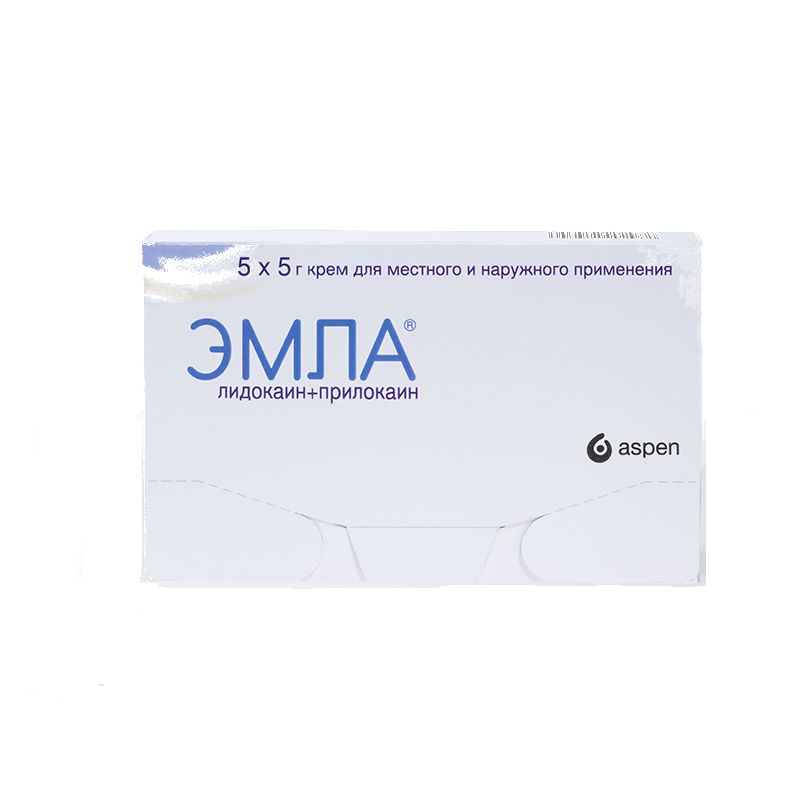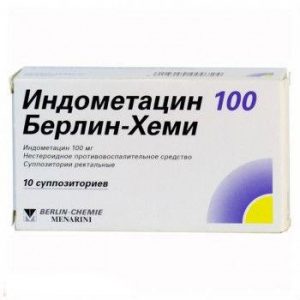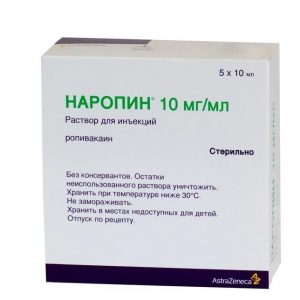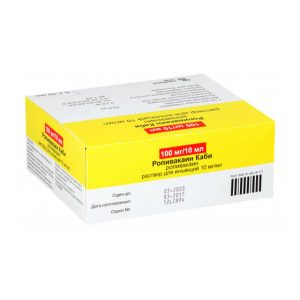Description
Latin name
Emla
Release form
Cream for local and external use.
Packing
5 tubes of 5 g each
Pharmacological action
Emla cream contains lidocaine and prilocaine, which are local amide type anesthetics, as active components.
Anesthesia of the skin is caused by the penetration of lidocaine and prilocaine into the layers of the epidermis and dermis. The degree of anesthesia depends on the dose of the drug and the duration of application.
After applying EMLA cream on intact skin for 1-2 hours, the duration of anesthesia after removing the occlusive dressing is 2 hours. There were no differences in efficacy (including time to achieve analgesic effect) and safety when applying cream on intact skin between elderly (65-96 years old) and younger patients.
Due to the action of EMLA cream on superficial vessels, temporary blanching or redness of the skin is possible. Similar reactions in patients with common neurodermatitis (atopic dermatitis) can occur faster, already 30-60 minutes after applying the cream, which indicates a faster penetration of the cream through the skin.
For puncture biopsy (4 mm in diameter), the use of EMLA cream provides adequate anesthesia of intact skin in 90% of patients 60 minutes after applying the cream with the needle inserted to a depth of 2 mm and 120 minutes after the needle is inserted to a depth of 3 mm. The effectiveness of EMLA cream does not depend on the color or pigmentation of the skin (skin type I-IV).
When using combination vaccines against infections such as measles, rubella, mumps, or intramuscular combination vaccines against diphtheria, pertussis, tetanus, polio and Haemophilius influenzae type b infection, as well as when vaccinating against hepatitis B, the use of EMLA cream did not affect the average antibody titer, the rate of appearance or disappearance of specific antibodies in the blood serum, or the number of patients who achieved a protective or positive antibody titer after immunization.
Anesthesia of the genital mucosa is achieved faster than anesthesia of intact skin due to faster absorption of the drug. In women, 5-10 minutes after applying EMLA cream on the mucous membrane of the genital organs, anesthesia is sufficient to relieve pain caused by the use of an argon laser, the anesthesia duration is 15-20 minutes (taking into account individual characteristics from 5 to 45 minutes).
After applying the cream during the treatment of trophic ulcers of the lower extremities, the anesthesia lasts up to 4 hours. There was no negative effect of the drug on the healing process of ulcers or in relation to the bacterial flora.
Indications
surface anesthesia of the skin during injection, puncture and catheterization of vessels and superficial surgical procedures.
surface anesthesia of trophic ulcers of the lower extremities during surgical treatment (mechanical cleaning), for example, to remove fibrin, pus and necrotic tissue.
superficial anesthesia of the genital mucosa before painful manipulations (only in adults) and for pain relief before local anesthetics injections.
Contraindications
hypersensitivity to local amide type anesthetics or any other component of the drug.
premature infants born with a gestational age of less than 37 weeks.
newborns with body weight less than 3 kg.
Use during pregnancy and lactation
Insufficient data on the use of EMLA cream in pregnant women. In animal studies, there was no direct or indirect negative effect of the drug on pregnancy, intrauterine development of the fetus, on the birth process or postnatal development.
Lidocaine and prilocaine cross the placental barrier and can be absorbed in fetal tissues.
No specific reproductive disturbances have been reported, such as an increase in the frequency of malformations or other direct or indirect adverse effects on the fetus.
Lidocaine and prilocaine are excreted in breast milk in quantities that do not pose a risk to the baby when using the drug in therapeutic doses.
Composition of
1 g of cream contains 25 mg lidocaine, prilocaine 25 mg
excipients:
carboxypolymethylene
castor oil polyoxyhydrogenated
sodium hydroxide to adjust the pH to 8.7 9.7
purified water.
Dosage and administration
Externally, on the skin or mucous membrane.
The cream is applied under an occlusive dressing (available in the package) at least 1 hour before the start of the procedure, the time of application of the preparation is recorded on the dressing, after removing the dressing, wipe off the remaining cream with ethanol.
For skin anesthesia: adults (for small procedures) are applied 1.5 g / 10 sq. cm for 1-5 hours, on large surfaces – 1.5-2 g / 10 sq. cm for 2-5 hours for children from 3 to 11 months – up to 1 g / 20 sq.cm. Children over 1 year old – 1 g / 10 sq. Cm.
Anesthesia of the genitals – 5-10 g of cream for 5-10 minutes (without tight dressing).
Side effects
pallor,
hyperemia,
edema,
burning,
itching in the area of application,
allergic reactions (including anaphylactic shock).
Overdose
Symptoms:
CNS excitation, convulsions, coma, methemoglobinemia (caused by prilocaine).
Treatment:
pulmonary ventilation, maintenance of vital functions, symptomatic therapy with methemoglobinemia – in / in slow solution of methylene blue, with convulsions – anticonvulsant therapy.
Storage conditions
Store below 30 ° C. Do not freeze.
Shelf life
3 years.
Active ingredient
lidocaine, prilocaine
Terms and conditions
without prescription
dosage form
cream
Possible product names
Emla 5% 5g cream No. 5
EMLA 5, 0 N5 CREAM
Emla cream 5 g, 5 pcs.
emla cream 5 g 5 pcs.
Emla cream 5 g No. 5 tube
Resifarm Karlskoga AB, UK




